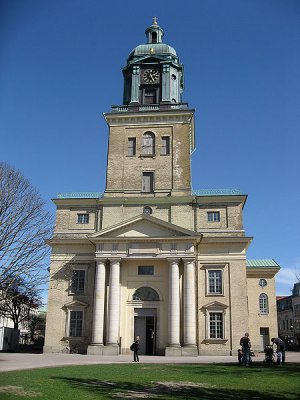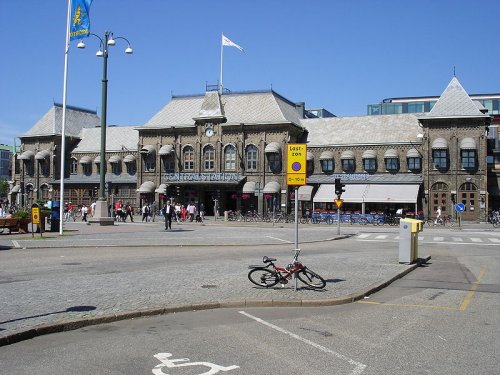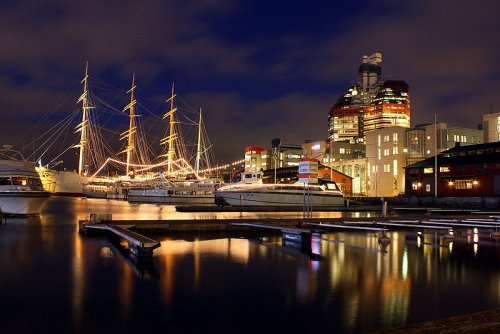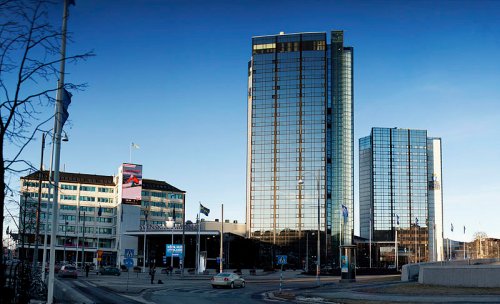 Gothenburg, Sweden
Gothenburg, SwedenSource: https://commons.wikimedia.org/wiki/File:View_of_G%C3%B6teborg_from_%C3%84lvsborgsbron_2009-10-02_a.jpg
Author: Luen

Gothenburg is a city in Västra Götaland County, on the southwestern coast of Sweden. With a population of 515,000 (2011 estimate) and a metropolitan population of 930,000, Gothenburg is the second largest city in Sweden, and the fifth largest among cities in the Nordic countries.
Gothenburg is known as Göteborg in Swedish. It derives its name from the people living in the area, called Geats in English and Götar in Swedish. The area itself, in southern Sweden, is called Gothia in English, and Göta in Swedish, which is how the city became known as Gothenburg or Göteborg, meaning "Gothia Fortress".
Places of Interest in Gothenburg, Sweden
- Christinae Church
- Feskekôrka
- Gothenburg Cathedral
- Haga
- Kronhuset
- Oscar Fredrik Church
- Skansen Kronan
- Skanskaskrapan
Museums in Gothenburg
- Aeroseum
- Gothenburg Art Museum
- Gothenburg City Museum
- Gothenburg Natural History Museum
- Gothenburg Radio Museum
- KA 4 Museum
- Kviberg Military Museum
- Maritiman
- Maritime Museum
- Museum of World Culture
- Röhsska Museum
- Universeum
- Volvo Museum
 Gothenburg Cathedral
Gothenburg CathedralSource: https://commons.wikimedia.org/wiki/File:Goteborg_domkyrkan.jpg
Author: Abelson

Gothenburg is located at the mouth of the Gothia River (Göta älv) about equidistant from from Oslo and Copenhagen. The city experiences an oceanic climate. The Gulf Stream has an impact on the climate, giving the city mild temperatures throughout the year. Warmest months are June through August, with average high temperatures exceeding 19°C (66°F). Coldest months are January and February, when the average low temperatures drop to -4°C (25°F) or more. October and November receive the most precipitation while April the least. Longest days are in June, with a total of 266 hours of sunshine, while the shortest is December, with only 38 hours.
The history of Gothenburg is traced to the building of a church in 1603. That church was destroyed by an attack by Dutch forces in 1611, and the site located near the north end of the Äsborg Bridge, is marked with a stone marker. Ironically, when King Gustavus Adolphus founded Gothenburg in 1621, he commissioned Dutch city planners to design the city, tapping on their experience in building on marshy land.
The resulting city bore characteristics similar to Amsterdam, and to Jakarta, which was also designed by the Dutch around the same time. Gothenburg borrowed heavily from the Dutch in its earliest period, even suggesting that the Dutch language be made the official language of the town.
 Gothenburg Central Station
Gothenburg Central StationSource: https://commons.wikimedia.org/wiki/File:Centralstationen_goteborg.jpg
Author: Martin Olsson

At the time of its founding, Gothenburg was a strategic Swedish outpost on the western coast. It was surrounded to the north and south by territories belonging to Denmark-Norway (Sweden, Denmark and Norway were united under the Kalmar Union from 1397 until 1523, when Sweden broke off and declared its independence. Denmark and Norway continued as a united kingdom 1814, when Denmark-Norway was forced to cede Norway to Sweden.)
In 1658, King Karl X Gustav of Sweden defeated the army of Denmark-Norway in the Second Northern War, which forced Denmark-Norway to surrender territories to Sweden. The ceded territories are to the north and south of Gothenburg, strengthening its position as a Swedish port city and trading center.
Gothenburg developed to become Sweden's gateway. It is also from here that a vast number of Swedish emigrants left for North America. At the same time Gothenburg became a modern industrial city, particularly by the early 20th century. The Swedish company SKF was founded here 1906, and it became the parent company that established Volvo in 1927.
 Lilla Bommen marina with the Skanskaskrapan building on the right
Lilla Bommen marina with the Skanskaskrapan building on the rightSource: https://commons.wikimedia.org/wiki/File:Lilla_Bommen_in_Gothenburg.jpg
Author: Mikael Miettinen

Today Gothenburg is a modern Swedish city. The city center is at the Gothenburg Central Station. As with most European cities, it does not have many skyscrapers, but one that stands out among the rest is the 22-storey Skanskaskrapan, popularly called "the Lipstick building".
Visiting Gothenburg
Gothenburg has two airports, Gothenburg-Landvetter Airport (GOT) and Gothenburg City Airport (GSE). The Landvetter Airport is the main international airport. It is also the second biggest airport in Sweden. Located 25 km to the east of the city, Landvetter has flights coming from different cities in Europe. Arriving here, you can take the Flygbussarna bus to downtown Gothenburg. The fare is 80 SEK one way (150 SEK return).Closer to the city center is the Gothenburg City Airport, served by Ryannair and Wizz Air. There's a Flygbussarna bus service here also, costing 60 SEK one way and 110 SEK return to downtown Gothenburg.
 Gothia Towers, Gothenburg
Gothia Towers, GothenburgSource: https://commons.wikimedia.org/wiki/File:Gothia-towers-korsvagen.jpg
Author: Reimund Trost

Exploring Gothenburg
The public transport operator in Gothenburg is Västtrafik (https://www.vasttrafik.se/en/), which manages the trams, buses and ferries of the city. As a tourist, you can buy the prepaid card or the unlimited pass. The pass comes in denominations of one day (65 SEK), 3 days (130 SEK) and 30 days (435 SEK). In addition, you can also buy a tourist card, available from the tourist office. You can use it for riding the public transport as well as for entrance to various museums. Latest updates on Penang Travel Tips
Latest updates on Penang Travel Tips

Copyright © 2003-2025 Timothy Tye. All Rights Reserved.

 Go Back
Go Back